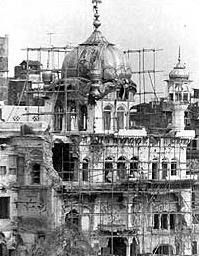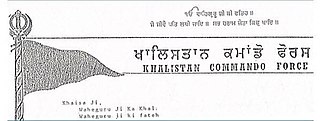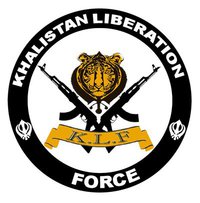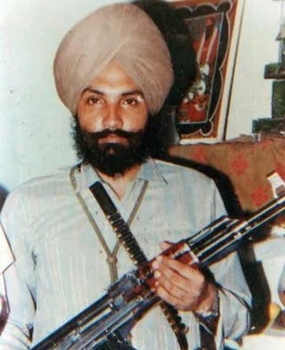Operation Black Thunder II

Operation Black Thunder II (sometimes referred to as Operation Black Thunder) began on 9 May 1988 [6] in Amritsar and ended with the surrender of the militants on 18 May. The operation was under control of the Union Home Ministry and had been planned since early 1988. In early 1988 the government created a model of the Golden Temple in the Aravalli Hills where National Security Guards practiced the operation. They later practiced the Operation in a high school and college in Harayana. The Special Action Group commandos had already started to grow their hair so they could blend in as Sikhs during the operation. [5] : 117
By mid February the date of the Operation was set and leave of the Special Action Group commandos had been cancelled. In the lead up to the operation Jarnail Singh Bhindranwale's nephew Jasbir Singh Rode was released and president rule was declared in Punjab. Punjab was further to be declared a state of emergency. State sponsored terrorists used Soviet made RPG-7's at a Vishwakarma Temple near Phagwara where there were 70 CRPF stationed. [5] : 117–118
On May 8 DIG (Deputy Inspector General of Police) of CRPF Sarabdeep Singh Virk went to a building near the Golden Temple and convinced a militant, Santhok Singh Kala, to join security forces and to carry out terrorist operations for them. Kala taunted other militants which led to them firing and Virk being injured. Hearing about the shooting the Jathedar, Jasbir Singh Rode, hurried to Amritsar. [5] : 118
On May 11 and 12 1,000 commandos from the Special Action Group were airlifted to Amritsar under the command of Brigadier Sushil Nanda. Nanda had a hot line to New Delhi with the National Security Guard control room. On May 11 Rode was able to get a ceasefire that lasted two hours. Rode met with Gurdev Singh Kaunke, journalists, and other associates. He talked to other militants. During this time commandos took their positions replacing the CRPF which had been previously stationed. [5] : 118–119 [7]
The ground level was commanded by Kanwar Pal Singh Gill who was the DGP of Punjab Police. Snipers were used in this operation. [8]
Soon civilians and militants surrendered. Compared to Operation Blue Star, little damage was inflicted on the Golden Temple. [9] In what was reported as a successful operation, around 200 militants surrendered, 41 were killed. Gill stated that he did not want to repeat the mistakes made by the Indian army during Operation Blue Star. [10] This operation was described as a severe setback to the Anandpur Resolution implementation movement. In contrast to prior operations, minimum force was used under full public scrutiny. [11] It is remembered for the free access the news media was provided unlike during Operation Blue Star. [12] The day after the militants surrendered, nine reporters were allowed into the Temple complex. [13] Kirtan was resumed at the Golden Temple on 23 May 1988 after a two-week break during this operation. [14]
While Operation Blue Star was widely considered poorly executed and shambolic because of the egregious loss of civilian lives and the damage done to both the Golden Temple and Sikh relations with the government (culminating in the assassination of Indira Gandhi by her bodyguards and the 1984 Sikh massacre), Operation Black Thunder was far more successful with the blockade tactics paying dividends, and has been credited with breaking the back of the Sikh separatist movement. Soon after this operation, the Indian Government banned the use of religious shrines for political and military purposes and increased penalties for the possession and use of illegal weapons, as part of its strategy to fight extremism in the Punjab region. [15]
In 2002, Sarabjit Singh, then Deputy Commissioner of Amritsar at the time published a book "Operation Black Thunder: An Eyewitness Account of Terrorism in Punjab". The account was criticised by Kanwar Pal Singh Gill who claimed that the operation was initially called "Operation Gill" before being renamed "Operation Black Thunder". [16]
















